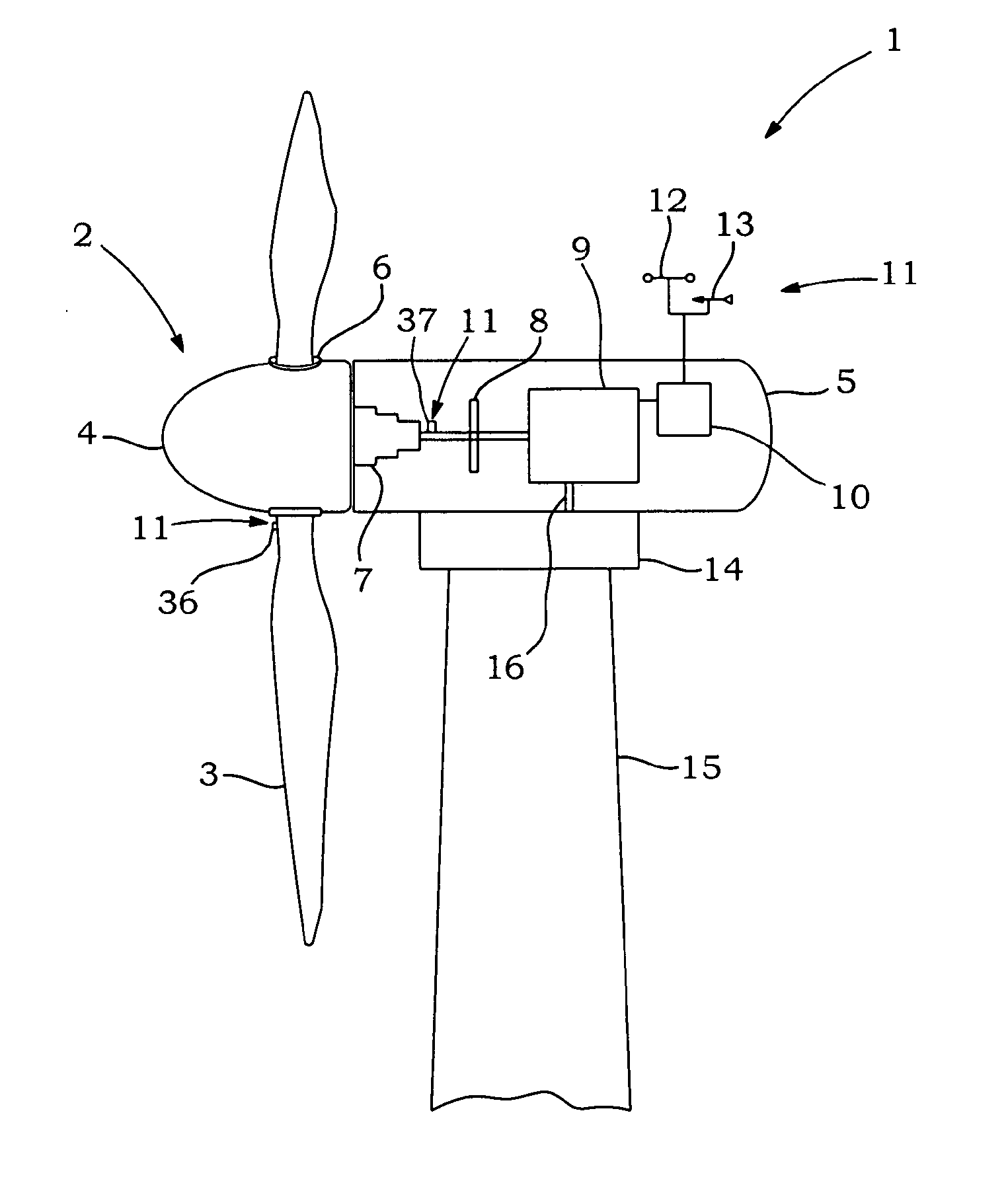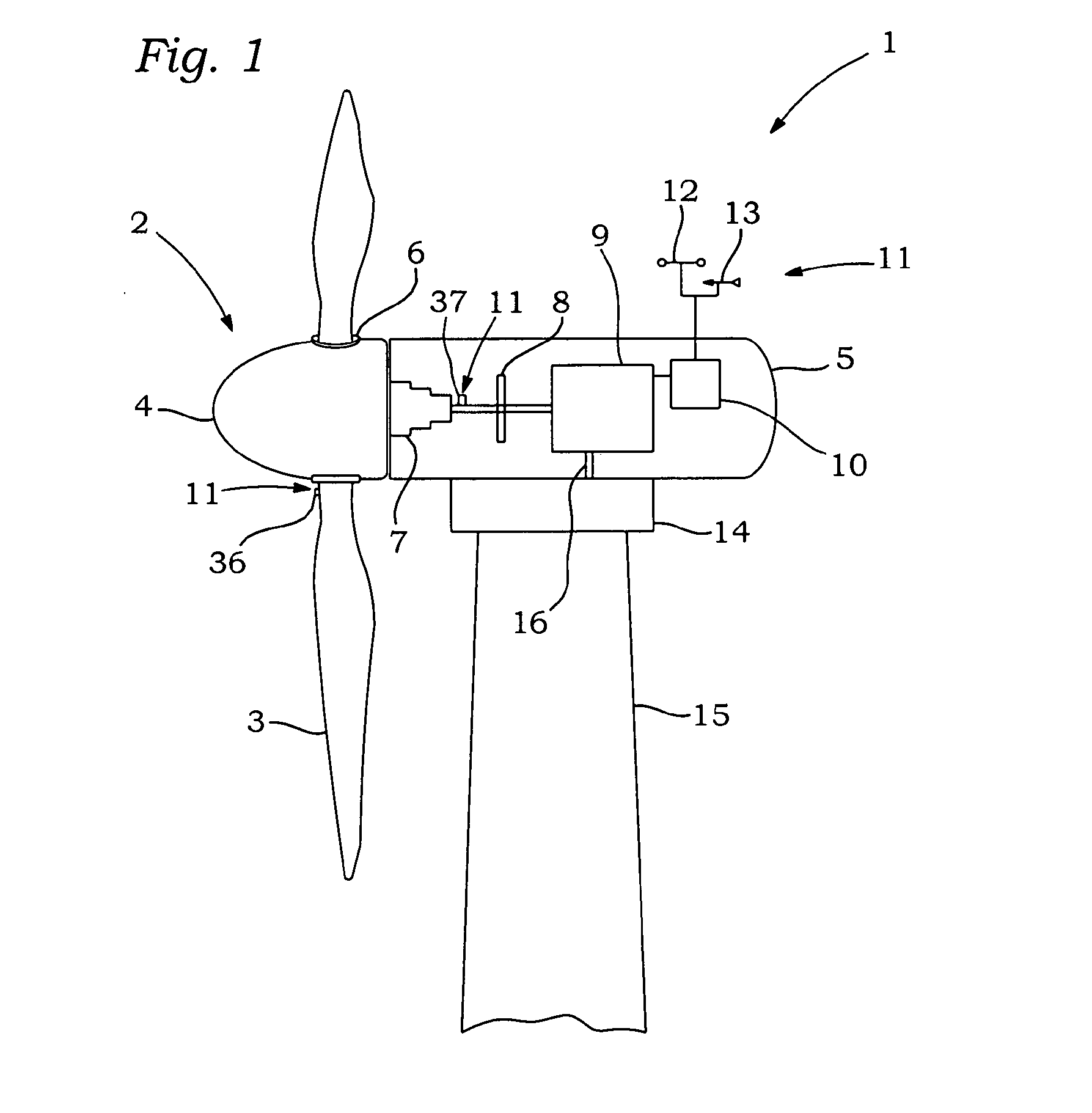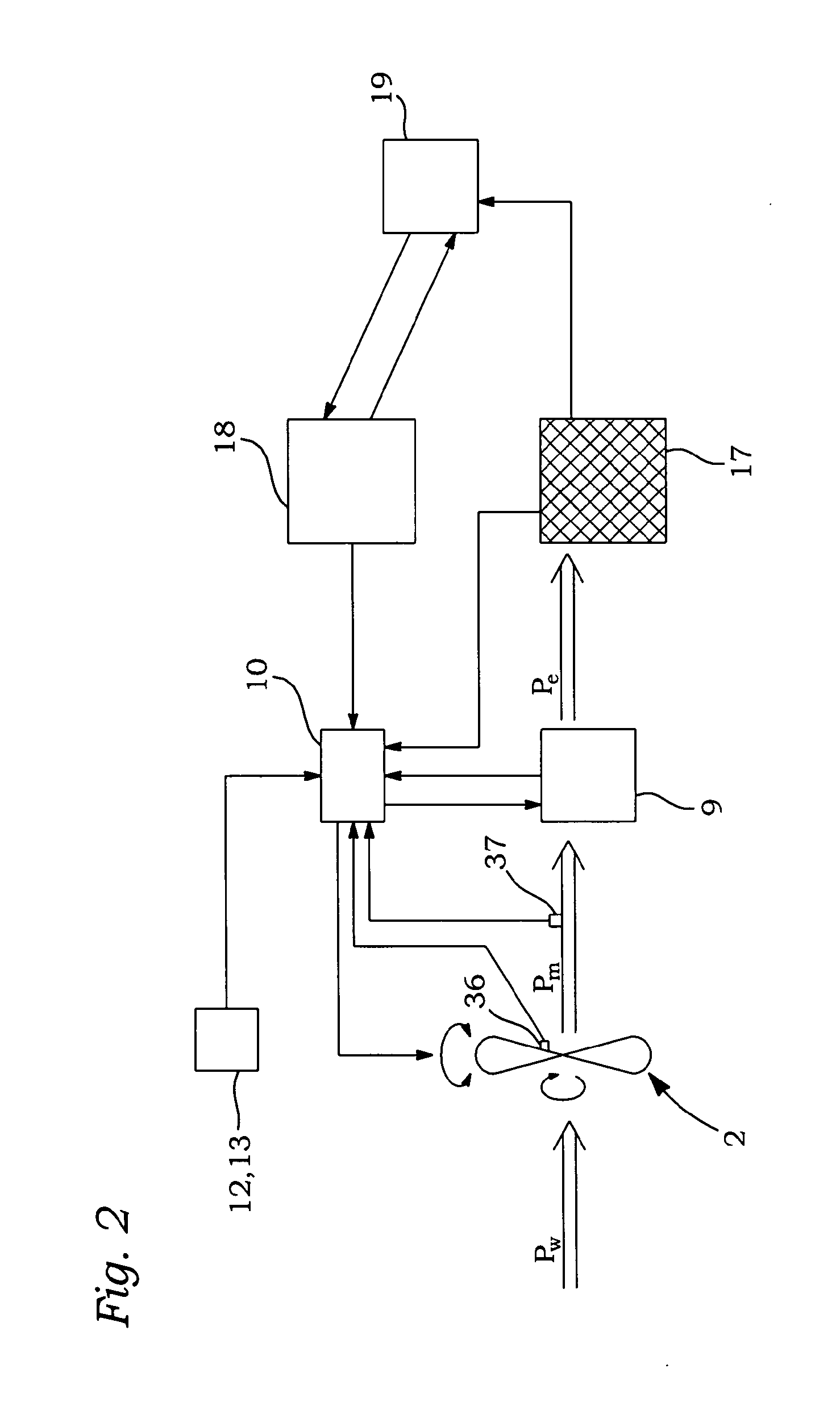Wind turbine providing grid support
a wind turbine and grid support technology, applied in the direction of electric generator control, machines/engines, mechanical equipment, etc., can solve the problems of increasing grid frequency, wind turbines generally not contributing to primary power control, and fluctuation of grid frequency, so as to support contribute to the stability of the electrical grid
- Summary
- Abstract
- Description
- Claims
- Application Information
AI Technical Summary
Benefits of technology
Problems solved by technology
Method used
Image
Examples
first embodiment
[0082]The values of Pe, Pm and ω during the overproduction and recovery periods in the first embodiment are visualised in FIG. 4 (Pe is the solid line, Pe0 the dash-dot line, Pm the dotted curve and Pemin the dash-dot-dot line). During normal operation, the wind turbine operates on the working point with an optimal efficiency, i.e. the operating power Pe and rotor speed ω are set in accordance with its production curve (cf. FIG. 3). When controller 10 detects an indicating event it initiates the ancillary grid-stability support activity according to the invention. At the moment the wind turbine 1 enters the first phase, i.e. the overproduction period, electrical output power and rotor speed correspond to point A in FIG. 4 (Pe0 and ω0 wherein Pe0=0.8 pu in the example of the first embodiment). With the start of the overproduction period, Pe is increased beyond its normal value, shifting the wind turbine's working point to point B in FIG. 4. This additional power is called ΔPop. In th...
third embodiment
[0090]The third embodiment permits a slightly higher contribution to the stability of the electrical grid 17 in the first phase of the recovery period. Of course, the recovery period is extended by the duration of the zero rotor re-acceleration so that, in the example of FIG. 8, it is about 6.5 times longer than the overproduction period.
[0091]The embodiments one to three have been described so far on the assumption that the wind turbine 1 operates in partial-load mode when an indicating event is detected by controller 1 and the ancillary control mode is initiated. Of course, the wind turbine 1 can also perform grid-stability supporting activity while operating in full-load mode (i.e. Pe0=Pnom, with available wind power Pw corresponding to a higher power than the nominal electrical power of the wind turbine, cf. FIG. 9). In this case, the overproduction period, in general, does not differ from partial-load operation (apart from the fact that, as the wind turbine 1 will be operating ...
PUM
 Login to View More
Login to View More Abstract
Description
Claims
Application Information
 Login to View More
Login to View More - R&D
- Intellectual Property
- Life Sciences
- Materials
- Tech Scout
- Unparalleled Data Quality
- Higher Quality Content
- 60% Fewer Hallucinations
Browse by: Latest US Patents, China's latest patents, Technical Efficacy Thesaurus, Application Domain, Technology Topic, Popular Technical Reports.
© 2025 PatSnap. All rights reserved.Legal|Privacy policy|Modern Slavery Act Transparency Statement|Sitemap|About US| Contact US: help@patsnap.com



